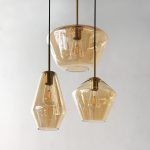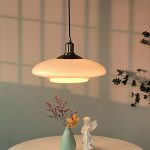The Power of Light Design
Lighting can have a significant impact on the look and feel of a space, and the right lighting design can enhance the overall atmosphere and functionality of a room. Indirect ceiling lighting is an increasingly popular option for creating a warm, inviting ambiance that draws attention to key design elements in a space while providing seamless illumination.
What is Indirect Ceiling Lighting?
Indirect ceiling lighting involves the use of fixtures that reflect light off a surface, such as the ceiling or walls, to create a diffuse, gentle glow throughout a space. This subtle lighting technique offers numerous benefits, including:
- Minimizing harsh shadows and glare
- Providing a warm and inviting atmosphere
- Improving visual comfort and reducing eyestrain
- Highlighting key design elements in a space, such as architectural features, artwork, or furniture
How Does Indirect Ceiling Lighting Work?
Indirect ceiling lighting fixtures work by directing light upward toward the ceiling, where it is then reflected back into the room. This creates a soft, even glow that illuminates the space without harsh shadows or glare. One common type of indirect ceiling lighting is uplights, which are mounted on the ceiling and point upward toward the ceiling plane.
Designing with Indirect Ceiling Lighting
When incorporating indirect ceiling lighting into a space, there are numerous design considerations to keep in mind, including:
- Choosing the right fixture: There are a variety of fixtures available for indirect ceiling lighting, including recessed, pendant, and surface-mounted options. Consider the overall style and functionality of the space, as well as the size and shape of the fixture, when choosing the right fixture for your needs.
- Location and placement: The placement of the fixtures will depend on the size and layout of the room, as well as the desired effect. In general, fixtures should be evenly spaced and placed around the perimeter of the room to create a uniform, diffused glow.
- Color temperature: The color temperature of the light can impact the look and feel of a space. Warmer temperatures, such as 2700K, can create a cozy, inviting atmosphere, while cooler temperatures, such as 5000K, can create a more modern, clinical look.
- Dimming capabilities: Indirect ceiling lighting fixtures can benefit from dimming capabilities, allowing you to adjust the brightness of the light to suit your needs and preferences.
Benefits of Indirect Ceiling Lighting
Indirect ceiling lighting can provide numerous benefits for your space, including:
- Enhanced ambiance: Indirect lighting provides a warm, inviting ambiance that can make your space feel more relaxed and comfortable.
- Improved functionality: Indirect lighting illuminates a space without causing harsh shadows or glare, making it an ideal source of light for work or reading.
- Energy efficiency: Indirect lighting uses less energy and can help reduce your energy costs.
- Design flexibility: Indirect lighting can be incorporated into a variety of different design styles and schemes, making it a versatile option for any space.
The Beauty of Indirect Ceiling Lighting
Indirect ceiling lighting is a subtle yet effective way to enhance the look and feel of your space. By creating a gentle, even glow and directing attention to key design elements in a room, this lighting technique can help you achieve the warm, inviting ambiance you desire while improving visual comfort and functionality. Whether you are looking to enhance an existing space or designing a new one from scratch, indirect ceiling lighting is a great option to consider.






